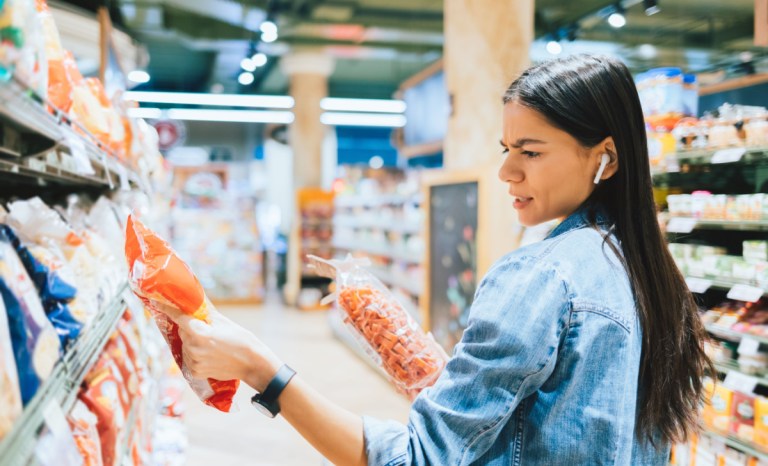Grocery Shrinkflation Adds to Shopper Frustration

As food prices rise, many consumer-packaged goods (CPG) brands seem to be reducing the amount of product per package, and consumers are taking note.
In recent weeks, viral content across major social media platforms including TikTok, Twitter and Reddit have appeared to show brands charging more or equal amounts for less product — a phenomenon known as shrinkflation.
For instance, a viral TikTok series of slideshows apparently showed that Gatorade has been increasing the size of the indents at the bottom of its bottles, decreasing the volume of the beverage, that Eclipse Gum has been replacing a piece of gum in each package with a “thumb grip,” and that Pop-Tarts has been dramatically reducing the amount of frosting per pastry.
PepsiCo (Gatorade’s parent company), Mars (Eclipse’s parent company) and Kellogg’s (Pop-Tart’s parent company) did not immediately respond to PYMNTS’ request for comment.
On Reddit, meanwhile, one such apparent example making the rounds shows a 20.7-ounce bottle of Head & Shoulders shampoo that sold for the advertised price of a 23.7-ounce bottle.
Procter & Gamble (owner of Head & Shoulders) did not immediately respond to PYMNTS’ request for comment.
Consumers are growing frustrated with years of food inflation. The latest Consumer Price Index (CPI) data from the Bureau of Labor Statistics (BLS) revealed that, in June, food at home (i.e., grocery) prices rose 4.7% year over year on top of a 12.2% increase the prior year, amounting to a 17.5% increase on a two-year stack.
Plus, consumers feel the impact of inflation even more so than the measured rates. According to data from PYMNTS’ May report, “Consumer Inflation Sentiment Report: Consumers Cut Back by Trading Down,” which drew from a spring survey of more than 2,000 U.S. consumers, the average shopper estimated grocery inflation to amount to 22.4% year over year in March, when the BLS was reporting it to be just 8.4%.
Given these perceptions, grocery shoppers are adjusting their spending where possible. The same Consumer Inflation Sentiment study revealed that 57% of consumers have cut down on nonessential grocery spending, and 47% of shoppers have switched to sellers that offer better prices on groceries.
“In terms of consumer sentiment,” Alex Weinstein, chief digital officer online grocer Hungryroot, told PYMNTS in a recent interview, “inflation is right up top as far as their concerns for the economy, so this still is a very significant issue for them.”
Indeed, most consumers expect these inflationary challenges to remain for more than a year to come. Research from PYMNTS’ March study “Consumer Inflation Sentiment: The False Appeal of Deal-Chasing Consumers,” which drew from a survey of more than 2,100 U.S. adults, revealed that the average consumer expects inflation to remain above pre-2021 levels until October 2024.
“While no one can predict the macroeconomic outlook with certainty, we expect customers, particularly those on tighter budgets, will continue to feel the effects of inflation and higher interest rates,” grocery giant Kroger’s CEO Rodney McMullen told analysts on the company’s last earnings call.